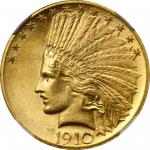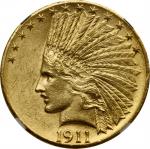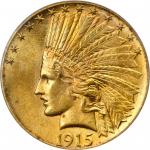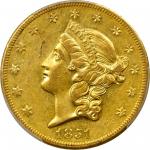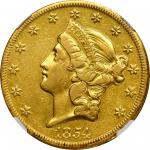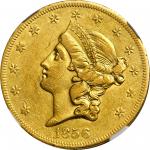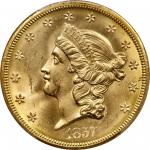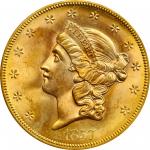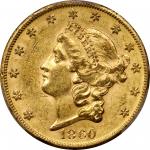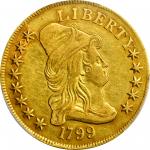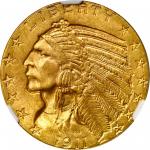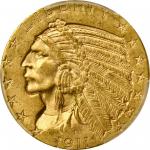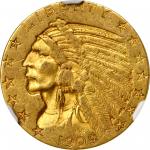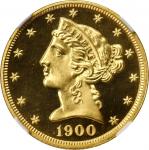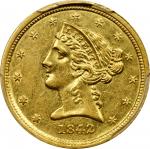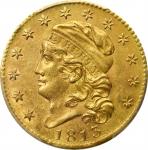1804 Capped Bust Right Eagle. BD-1, Taraszka-31. Rarity-4+. Crosslet 4. EF-45 (PCGS).Pretty reddish-rose iridescence drifts over otherwise medium gold surfaces on both sides of this appreciably lustrous Choice EF. Virtually all known circulation strike 1804 eagles are softly defined to one degree or another. The present example is nicely centered on the planchet with full denticulation around both sides. Overall detail to the devices is soft, however, with stars 11 and 12 on the obverse and the eagles left shoulder and right talon on the reverse particularly blunt. The sharpest design elements are many of the obverse stars, most of the individual strands in Libertys hair, the cap and, on the reverse, the arrow heads, olive branch and many of the eagles wing and neck feathers. Several adjustment marks (as made) on the obverse slant down to the right from Libertys face to stars 11 and 12, helping to explain the lack of detail for those features. BD Die State b/b.<p>From the very beginning, the gold eagle was a showpiece coin to help spread American prestige around the world. However, the seeds of its eventual suspension in 1804 were sown at the outset when Congress mandated that gold coins were to be struck at a 15 to 1 gold to silver ratio. Economic turmoil rocked the global economy and combined with the vast amounts of silver coming out of South America at the time only served to raise the value of gold against that of silver, prompting rampant bullion speculation. By the time the eagle was introduced, the actual ratio was closer to 15.5 to 1, making American gold coins worth more intrinsically versus their face value. This drove the large eagles from circulation and into European commodity brokers melting pots, so much so that this was the fate of an estimated 98% of all early American gold. Silver dollars, too, were also subject to the same speculation and were driven from circulation. Mint Director Elias Boudinot protested to President Thomas Jefferson that continued production of both the eagle and the silver dollar just to have them bought up and shipped to overseas crucibles was a waste of both precious metal as well as Mint resources. Jefferson agreed with this assessment and in 1804, ordered that production of both denominations be suspended indefinitely. It would not be for another 34 years before production of the eagle resumed.<p>Such was the state of affairs in 1804 when the last of these large and impressive coins were struck. The production records for eagles in 1804 are somewhat muddled, as was the norm for the era. The official records state that 3,757 pieces struck that year, and that number has long been the accepted figure. However, as die marriage analysis has since shown, this quantity included a number of 1803-dated coins. The 1803 BD-6 eagle used a later die state of the same reverse used for the 1804 BD-1 coin, therefore the distinction of being the last eagles struck for circulation until 1838 actually belongs to an 1803-dated die pair. In addition, the second variety of 1804 eagle, the Plain 4 variety - are Proof-only strikings of which only 4 to 8 were made around 1834 or 1835 for inclusion in the legendary sets presented to foreign dignitaries that included the world-famous 1804 dollars. At present, the best mintage estimates for 1804-dated circulation strike eagles place somewhere around the 2,500 piece mark. Any 1804 eagle is desirable, especially with at best an estimated 100 surviving specimens combined with the additional cachet of that most famous date in American numismatics. Here is an offering worthy of a premium bid.



